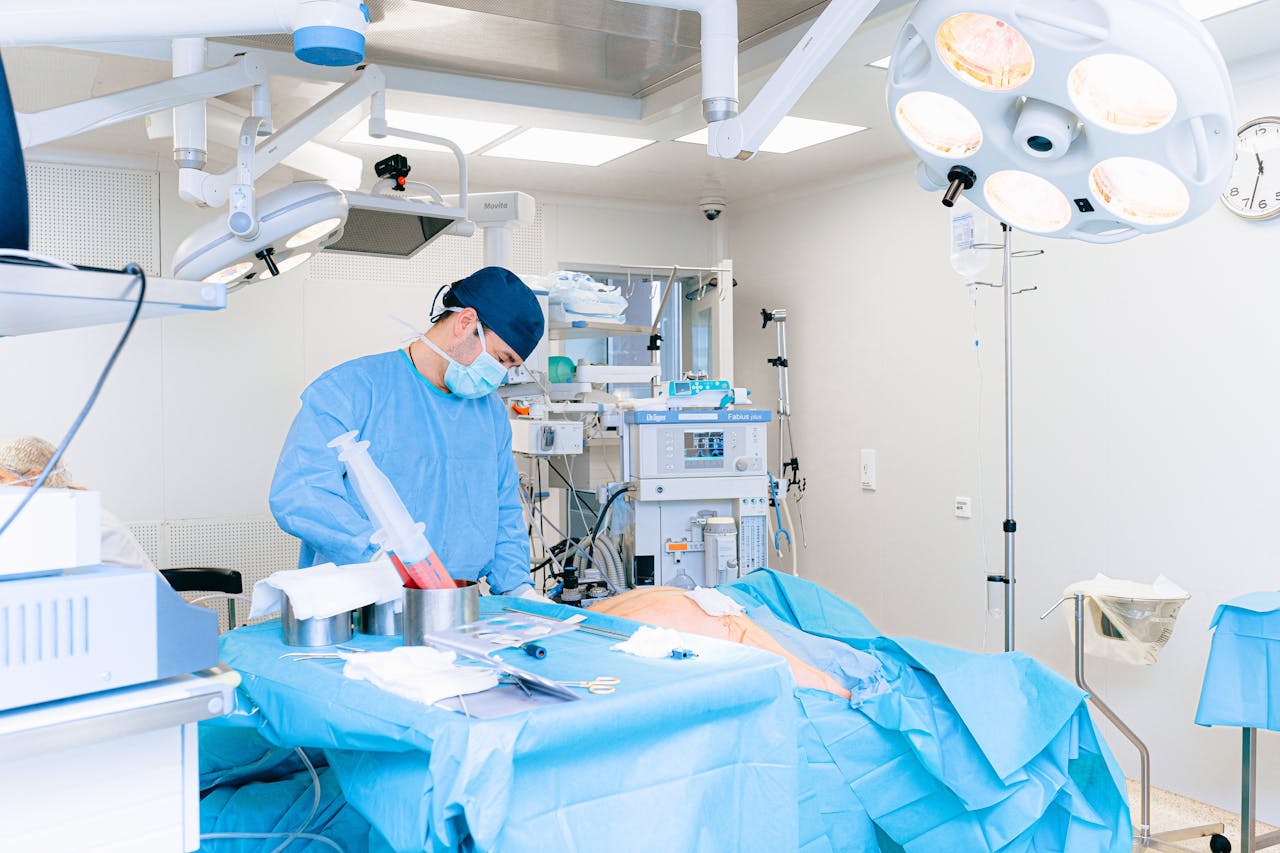

· By Trevor Horne
Surgical Lights: Efficient Lighting Solutions for Better Surgical Outcomes
In the world of surgery, accuracy and precision are of paramount importance. A well-equipped operating room should provide the optimal environment for surgeons to perform their responsibilities effectively and without complications. One critical factor in creating such a conducive setting is the use of high-quality surgical lights. These advanced illumination systems help provide a clear, shadow-free view of the surgical field, enabling surgeons to perform delicate procedures with ease and confidence.
Surgical lighting plays a significant role in determining the success of a surgery by ensuring that surgeons have the visibility they need to identify and manipulate intricate anatomical structures. Using the correct surgical lighting system is essential, as it can greatly impact patient outcomes and overall surgical efficiency. In our upcoming series, we will discuss the importance of surgical lighting in the operating room, delve into the different types of surgical lights available, and offer valuable tips on choosing and maintaining efficient lighting solutions.
Join us as we explore the world of surgical lights, and learn how these advanced illumination solutions are vital to achieving the best patient outcomes and improving surgical workflow.
The Importance of Surgical Lighting in the Operating Room
Adequate lighting is critical in the operating room, as it directly impacts surgeon's visual acuity, patient outcomes, and overall surgical efficiency. Let's dive into the significance of surgical lighting:
1. Enhanced Visual Acuity: Surgical lights provide a clear, bright, and shadow-free view of the surgical field, enabling the identification and manipulation of delicate anatomical structures.
2. Improved Patient Outcomes: The ability to clearly see the surgical field translates into fewer complications and more precise surgeries, leading to better patient outcomes.
3. Surgeon Comfort and Performance: Proper illumination reduces eye strain and fatigue, promoting surgeon comfort and sustained focus during lengthy procedures.
4. Modern Lighting Technology: Advanced lighting technologies, such as LED systems, ensure optimal operating room conditions with minimal shadows, glare, and heat production.
Understanding the importance of surgical lighting will help guide your decision-making process when choosing the right lighting solution for your operating room.
Types of Surgical Lights: Selecting the Appropriate Illumination for Your Procedures
Several types of surgical lights are available on the market, each with its advantages and drawbacks. Familiarizing yourself with these options is crucial for making an informed choice:
1. LED Surgical Lights: These energy-efficient lights provide bright, uniform illumination, excellent color rendering capabilities, and generate minimal heat. LED lights also have a longer lifespan compared to their halogen counterparts.
2. Halogen Surgical Lights: Although less energy-efficient, halogen lights offer excellent color rendering and are more budget-friendly. However, they produce more heat and have a shorter lifespan compared to LEDs.
3. Mobile Surgical Lights: Portable, lightweight, and versatile, mobile lights are an excellent choice for facilities with limited space or where light placement flexibility is desired.
4. Ceiling-Mounted Surgical Lights: These lights are ideal for larger operating rooms, providing superior illumination while optimizing available space. They require professional installation but offer excellent stability and positioning control.
By understanding the pros and cons of each type of surgical light, you can determine which option suits your specific needs best.
Features to Consider When Choosing Surgical Lights for Your Operating Room
Several factors should be considered when selecting surgical lights that cater to your operating room's unique requirements:
1. Brightness: Choose lighting solutions that provide adjustable illumination levels, allowing you to customize the brightness based on the procedure's demands and personal preferences.
2. Color Rendering Index (CRI): A high CRI value indicates a light's ability to accurately reveal tissue color, enabling better tissue differentiation during procedures.
3. Adaptability: Opt for lighting systems that can be easily adjusted in terms of positioning, height, and focus, allowing for optimal illumination of the surgical field.
4. Durability: Consider investing in surgical lights with a proven track record for longevity and reliability, guaranteeing an extended lifespan and reduced maintenance costs.
5. Energy Efficiency: Give preference to energy-efficient lighting solutions, such as LED systems, which contribute to long-term cost savings and a lower environmental impact.
Taking these factors into account ensures that you invest in a surgical lighting solution that best suits your facility's specific needs.
Maintenance and Safety Tips for Surgical Lights in a Clinical Setting
Adhering to proper maintenance and safety protocols is essential to prolong the life of your surgical lights and ensure optimal operation:
1. Cleaning and Sterilization: Develop a routine cleaning schedule using compatible cleaning agents. For portions that may come in contact with the surgical field, utilize sterilization methods to prevent cross-contamination.
2. Inspections and Maintenance: Schedule routine inspections and address potential issues promptly to ensure consistent performance and longevity of the lighting system.
3. Safety Compliance: Follow manufacturers' guidelines and adhere to industry safety standards to minimize risks associated with electrical systems, heat generation, and potential radiation exposure.
4. Training and Support: Provide ongoing training to operating room staff on the proper use, cleaning, and maintenance of surgical lights to ensure safe and effective operation.
Implementing these maintenance and safety tips will lead to reliable and efficient surgical lighting solutions in your clinical setting.
Optimal Surgical Lighting for Improved Patient Outcomes
A well-lit operating room is crucial for achieving the desired surgical outcomes and maintaining the efficiency of surgical procedures. Investing in the appropriate surgical lights increases visibility, improves patient outcomes, enhances surgical efficiency, and contributes to the overall success of your surgical practice. Explore our selection of high-quality Canadian medical supplies designed to meet the demands of modern surgical facilities and cater to your unique needs.
